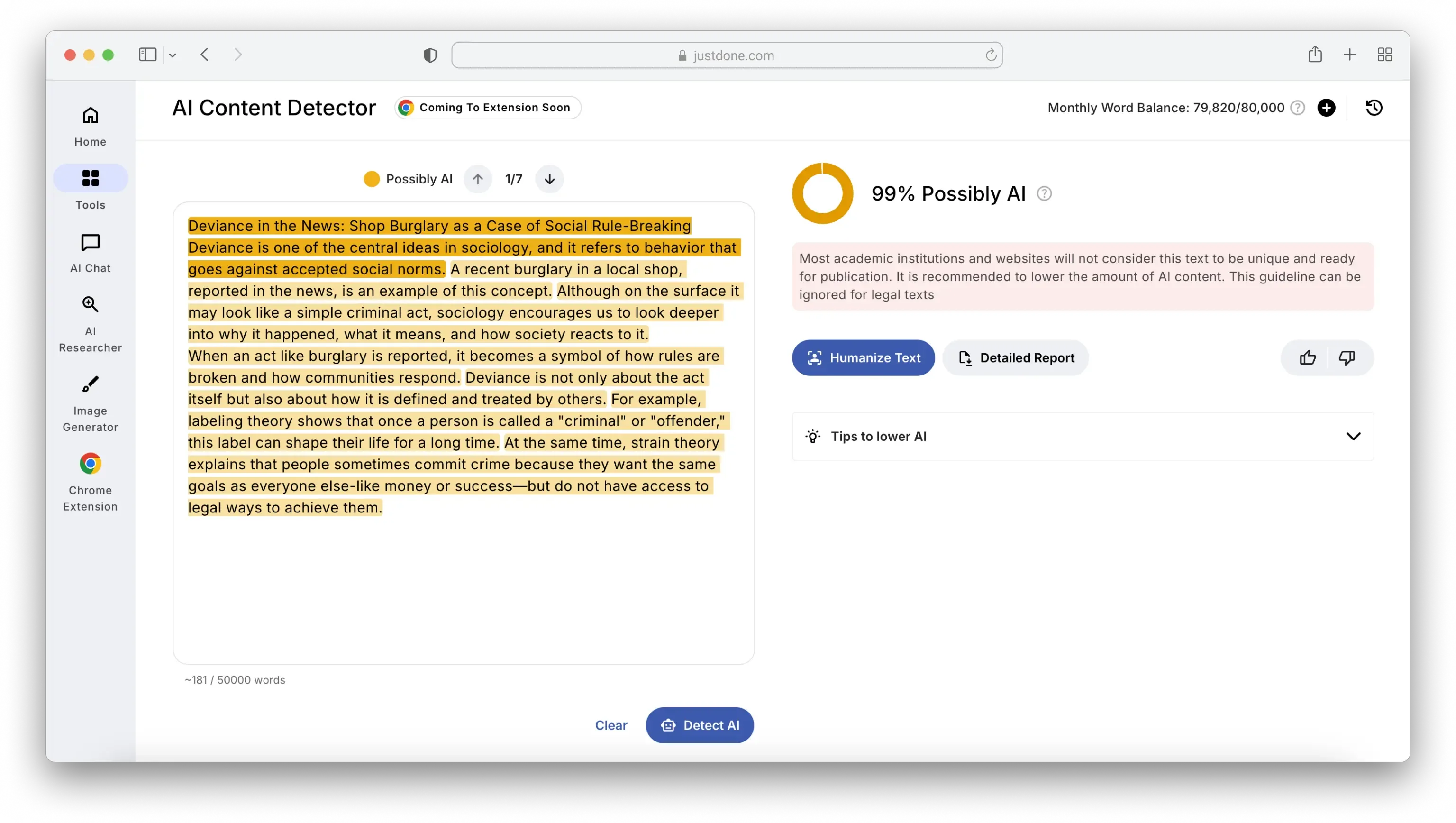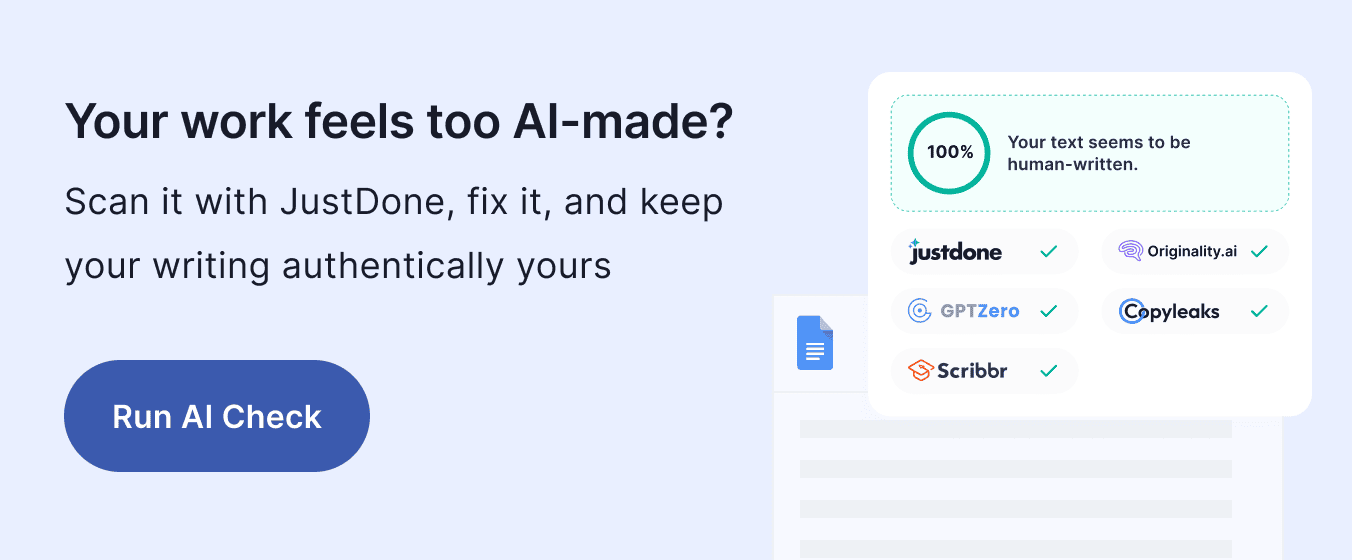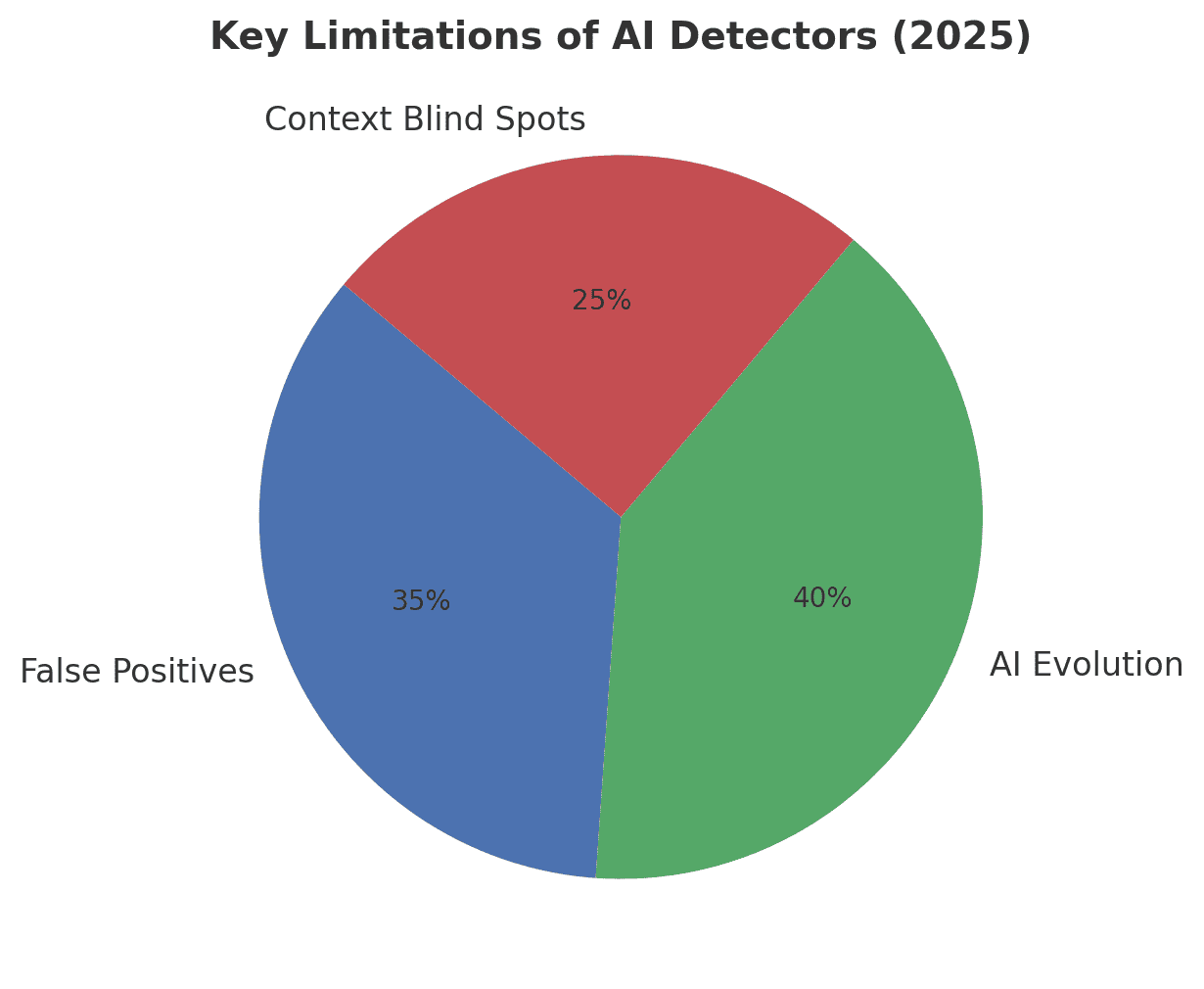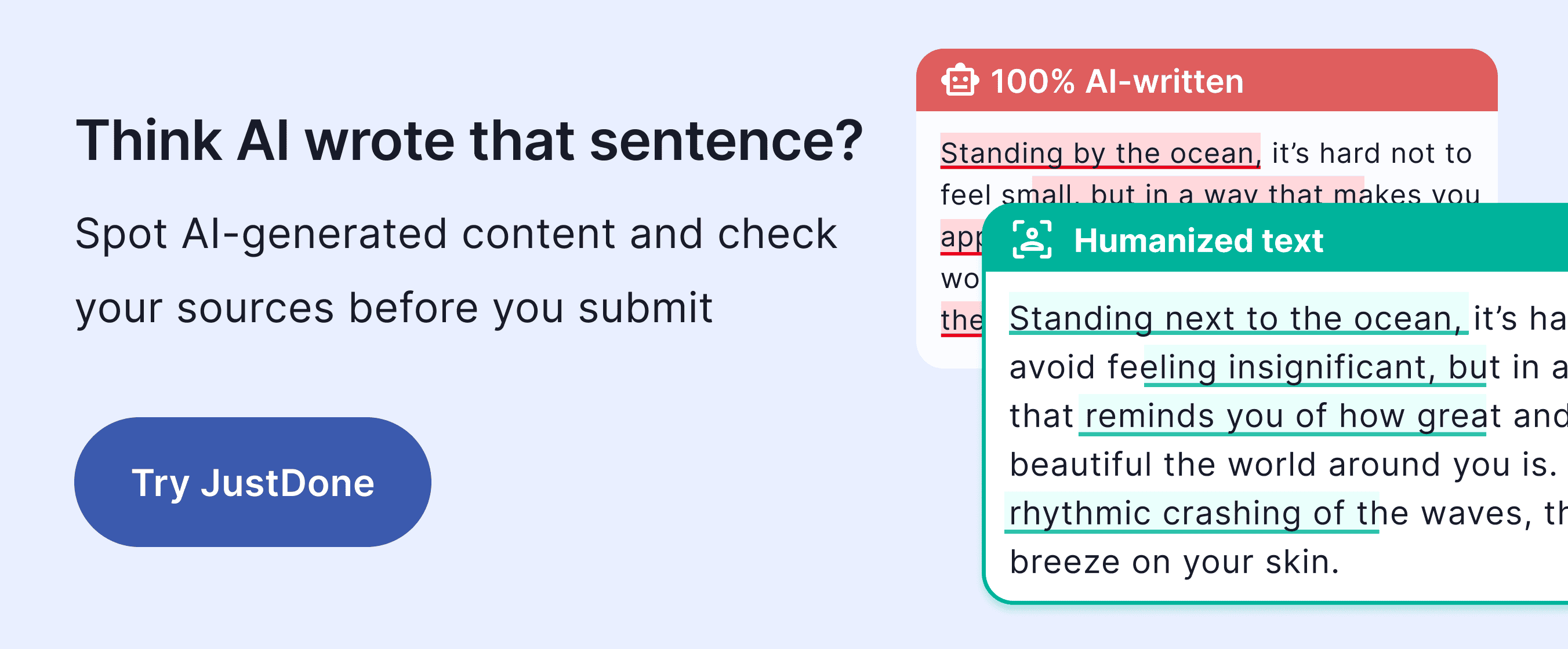The rise of artificial intelligence has revolutionized content creation, but with new technology come new challenges. Educators and creators now face a critical question: Is this text human-written or AI-generated?
AI content detectors help solve the dilemma of ensuring authenticity and originality by analyzing linguistic patterns, statistical cues, and hidden fingerprints in writing. But how well do AI detectors work? And how can you use them effectively?
This guide breaks down how do AI text detectors work within their algorithms, training data, and key metrics like perplexity and burstiness. Also, we'll see AI checkers' limitations, such as false positives, evolving AI, and contextual blind spots. Finally, I'll guide you through the best practices for educators and creators that will help you maintain authenticity.
How Do AI Detectors Work? A Simple Step-by-Step Explanation
AI content checkers are tools designed to detect whether a piece of writing was created by a person or by an AI tool like ChatGPT, Gemini, or something similar. They don’t read the way a teacher or editor would. Instead, they scan the text for clues based on how it’s written.

Think of an AI detector like a writing style checker. It doesn’t judge your ideas or whether you made a strong argument. Instead, it looks at the way the writing flows: how predictable your sentences are, how often you repeat certain structures, and how “human” the overall style feels. AI-generated writing often sounds very clean, smooth, and balanced, but sometimes, that’s exactly what gives it away.

Here’s a simple breakdown of what happens behind the scenes when you paste your text into an AI detector (on JustDone AI example):
- Input: You paste your text into the tool and hit "check."
- Analysis: The detector breaks your writing into small pieces (called “tokens”) and starts looking for specific features. It examines things like sentence length, word choice, sentence structure, and how often certain patterns appear. It also checks how predictable your word choices are. This is called “perplexity.” Human writing usually has more randomness and variation. AI writing, on the other hand, tends to be more predictable and balanced.
- Comparison: After analyzing your writing, the detector compares it to examples of texts it already knows: some written by people, and others written by AI. These tools have been trained on thousands of samples, so they’ve learned to recognize the typical patterns of both styles.
- Scoring: Finally, the tool gives you a score or percentage that shows how likely your text is to have been written by AI. But here’s the important part: a high “human” score doesn’t always mean your writing is fully human-made. It might just mean the AI you used was really good, or that your writing style naturally looks more human. Likewise, a “high AI” score doesn’t always mean you cheated; it could be your writing is too polished, too even, or too logical for what the detector expects from a typical student.
See the process on the chart here:

The process may sound complex, but the idea is simple: how do AI text detectors work? They look for signs that your text is “too perfect” or too pattern-based, the way most AI tools write. It’s important to remember that no AI detector is 100% accurate. They give you a likelihood, not a definite answer.
If you're looking for a tool that’s more advanced than basic free checkers, I recommend trying JustDone AI. It uses deeper language analysis to show why certain parts of your writing might look like AI. Plus, it helps you improve those parts without losing your voice. It’s especially helpful for students who want to use AI responsibly but still keep their work original. And with its Chrome extension, it fits easily into your writing flow.
Limitations: Why AI Detectors Aren’t Perfect
While AI content detectors provide helpful insights, they're not foolproof. These tools help identify AI-assisted work, but false positives can unfairly penalize students or writers. That’s why they should be used as part of a broader strategy for assessing content authenticity.
Understanding how well do AI detectors work means recognizing where they fall short:
- False Positives: Sometimes, human-written content may be misidentified as AI-generated due to its tone, writing style or structure.
- AI Evolution: As AI technology evolves, detection tools can struggle to keep up.
- Context Blind Spots: AI detectors may struggle with context-specific nuances, leading to inaccurate assessments. They analyze patterns, not meaning or intent.

Tip: Use detectors as a starting point, not a verdict. Understanding how AI detectors work and their limitations helps prevent misuse and avoids turning detection into a “digital witch hunt.” The best recommendation is to use an AI detector as part of a broader verification strategy and combine it with your own critical thinking to ensure accurate and fair results.
Best Practices for Using AI Detectors Based on How They Work
Over the past two years, working with universities, research teams, and content platforms, I’ve seen AI detectors evolve from clunky red-flag machines to nuanced writing tools. But I’ve also seen them misunderstood, misused, and sometimes feared. What’s clear is this: running your paper through a detector at the last minute isn’t enough. To use these tools well, you have to understand what they see, what they miss, and how to work with them, not around them.
One common mistake I see is students scanning their work only after it's finished. If something gets flagged, it’s too late to fix it without rewriting large sections.
A better strategy is to scan early, during drafting. In one course I consulted on, we introduced mid-draft checks. Students ran their introductions or outlines through content detectors like JustDone, and used the results to guide revisions. They began noticing when their work sounded too predictable or polished and made deliberate changes to regain authenticity.
Another lesson: not all detectors are built for the same kind of writing. Grammarly, for instance, is fine for blog posts or emails, but its AI score can be misleading in academic settings. It’s tuned for surface-level fluency, not argument depth or semantic rewriting. Meanwhile, Originality.AI and Copyleaks are much stricter. I’ve seen students flagged at 85% AI for essays they wrote themselves, just because their phrasing was clean and their structure followed a logical flow. These false positives can cause unnecessary stress.
One graduate student I worked with was nearly disqualified from a research fellowship after Turnitin’s AI content detection tool flagged her thesis chapter. What saved her wasn’t the detector. It was the version history in Google Docs, the peer feedback drafts, and notes that showed how her writing evolved over time. That context made it clear she’d written the work herself, even if the final version looked algorithmically “too perfect.”
 That experience shifted my thinking. Now, I always encourage students to build a writing audit trail. Keep your drafts. Take screenshots if needed. Show your revision process. And if you use AI for brainstorming, for rephrasing, be upfront about it. Transparency builds trust.
That experience shifted my thinking. Now, I always encourage students to build a writing audit trail. Keep your drafts. Take screenshots if needed. Show your revision process. And if you use AI for brainstorming, for rephrasing, be upfront about it. Transparency builds trust.
I also recommend students run calibration tests. Take one of your own essays and a ChatGPT-generated version. Scan both with AI detection tools. This will show you how well do AI detectors work in real situations. You’ll start to see how structure, sentence variety, and tone impact the detection score. I’ve had students discover that by breaking up repetitive sentence patterns or using more varied vocabulary, they could reduce the AI likelihood score, without changing their ideas at all.
One of the most honest things I’ve heard lately came from a professor: “I don’t want to be a detective. I want to be a mentor.” That’s exactly how AI detectors should be used. They’re not just about catching dishonesty. They’re tools for seeing writing more clearly, and helping both educators and students stay grounded in authorship, even as AI becomes a normal part of the creative process.
If I had to sum up what I recommend, it’s this: start early. Don’t use detection as a pass/fail tool; use it to shape your drafts. Choose the right tool for your context. Learn how do AI text detectors work so you can write in a way that feels more like you. And above all, keep records of how your work evolved. The process often tells the story better than the product.
If you’re looking for a tool that doesn’t just flag but also guides, JustDone’s AI checker has become one of the most balanced systems I’ve worked with. It helps students write better, not just cleaner.
Beyond AI Text Detectors Work: A Smarter Approach to Content Authenticity
I’ve seen AI detectors save students from accusations. I’ve also seen them cause chaos when misunderstood. At their best, they’re tools that teach us about our own writing habits and where we sound too polished, too generic, or too formulaic.
My advice, always: Don’t fear the tools. Master them. Use them to refine your tone, defend your originality, and grow as a writer, but not to pass some invisible test.
And if you need a tool that doesn’t just say “AI detected,” but actually helps you improve, JustDone’s AI Detector is the one I’d recommend. It’s what I use to coach students and professionals alike because it guides, not just judges.